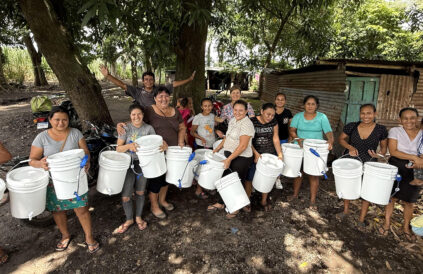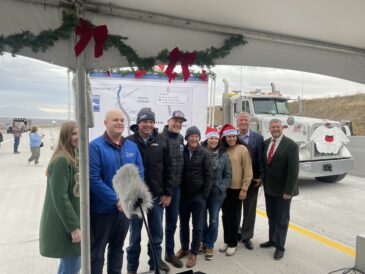‘Duty is duty’: Fallen soldiers remembered on Memorial Day at Camp Floyd Days
- Historical reenactors pose in front of a cannon on Monday, May 26, 2025, at Camp Floyd in Fairfield.
- A historical reenactor prepares a cannon on Monday, May 26, 2025, at Camp Floyd in Fairfield.
- Historical reenactors scoop ice cream on Monday, May 26, 2025, at Camp Floyd in Fairfield.
Camp Floyd Days on Memorial Day offered visitors a chance to honor the sacrifice of military veterans by learning what camp life was like for 19th century soldiers.
Historical reenactors at Camp Floyd in Fairfield shot a cannon, hosted old camp games, baked food and remembered fallen soldiers in Camp Floyd’s cemetery Monday.
“Out there is the cemetery, where a number of (Col. Albert Sidney) Johnston’s soldiers were buried,” said reenactor John Frandsen, of South Jordan. “So by being here and demonstrating history, not only are we honoring them, but we’re honoring soldiers of today by keeping the past alive.”
Camp Floyd represents a more complicated chapter of Utah’s history. The Fairfield army outpost was the home of 2,500 United States soldiers known as “Johnston’s Army,” who traveled west to respond to unfounded rumors of a Latter-day Saint rebellion in Salt Lake City and kept a watchful eye on the Latter-day Saint settlers from 1858 until the start of the Civil War in 1861.
Life for those 19th century soldiers was difficult. Illness was rampant, with three out of five Civil War deaths coming from disease, according to Jared Cornell, an American Fork resident and member of the Utah Living History and Reenactment.
He believes everyone who served their county deserves to be remembered, even Johnston’s Army.
“On Memorial Day, we remember those doing their duty for their country, even out here,” Cornell said. “The army had a lot of functions from this time period. And whether you died from a bullet in a battle or a disease at a lonely outpost like this, death is death, duty is duty, whatever that duty may be.”
At Monday’s event, Cornell and other reenactors wore the uniforms of Johnston’s Army and loaded and fired an 1841 cannon in front of onlookers.
The Frandsen family baked bread and cookies in an outdoor oven that served as a small replica of what the army would have used to feed thousands of soldiers on a daily basis.
“They would bake bread in it, bake pies, cookies, cakes,” Frandsen said. “Then at the end of the day they would take their beans that were soaking in ceramic jars and put them in the ovens and let them slow bake overnight.”
Fairfield resident Jeri Hansen, who works at the camp, handed out old toys for kids to play with. For her, the camp’s history is personal. Her ancestors made bricks and sold hay to the army at the camp. She feels the camp’s legacy should live on.
“The history of soldiers that were here at the time is important,” Hansen said.
Cornell agrees.
“This is local for us,” he said. “We have a group of us that have done a tremendous amount of research.”









